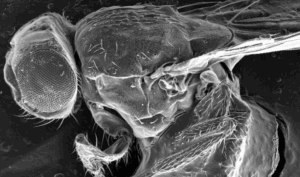Australian scientists believe electricity could be used to supercharge all chemical reactions, with the discovery being dubbed the ‘invisible catalyst’.
The finding is being described as a breakthrough with the potential to revolutionise the way we make new chemicals.
It could enable the cost-effective production of complex chemicals, such as new types of medicine.
It could also reduce the environmental impact of traditional catalysts used in industrial processes, some of which produce nasty byproducts.
The researchers who made the discovery—Curtin University’s Dr Simone Ciampi and Dr Nadim Darwish and the Australian National University’s Professor Michelle Coote—were even nominated for an Australian Museum Eureka Prize earlier this year.
Though they sadly missed out on the award, the discovery is still worthy of celebration. Here’s why.
CATALYST BASICS
Think back for a moment to your high school chemistry lessons.
A catalyst is something that speeds up a chemical reaction, without being consumed in the reaction.
A classic example is hydrogen peroxide, which naturally decomposes into oxygen and water.
This process is usually extremely slow.
But add a catalyst—potassium permanganate—and the reaction suddenly kicks off.
“A catalyst usually is a physical entity, something that you can touch,” Nadim says.
“It’s a powder or a metal that you add as you add salt to food.
“Usually these are expensive and toxic.”
Instead, the invisible catalyst team has found that electric fields, such as from a battery, can be used to speed up reactions instead.
“That’s something that’s not been discovered before,” Nadim says.
ONE CATALYST TO RULE THEM ALL
Simone says catalysts are normally specific to a particular reaction, and there might not be a known catalyst for the reaction you want to speed up.
But he says electricity has sped up all the reactions they’ve tried so far.
“We think that this could be applied to all chemical reactions but with different sensitivities,” Simone says.
How well electric fields will work for any given reaction can be predicted with a computer.
But there’s a catch—you have to orient the two molecules in the correct way.

LINING THEM UP
Getting molecules to react is a bit like playing Tetris—you need to orient them correctly if they’re going to fit together.
Until now, we haven’t had the technology to do that.
But Simone, Nadim and Michelle have been able to use nanotechnology to orient the molecules in the correct way and then bring them close together to react.
Working with nanoscale precision, everything they’re studying is tiny—think 100,000 times smaller than the width of a human hair.
Nadim says the challenge now is to scale the work to bigger quantities.
“We have some data to show you can go up from a few hundred to a thousand to a million billion,” he says.
“You ideally need to go towards a mole—a billion billion million.”
“It’s going to require larger electrodes—a bit of engineering but the science is solid.”
Maybe one day your house will be filled with objects made possible by the use of electricity as a catalyst.






